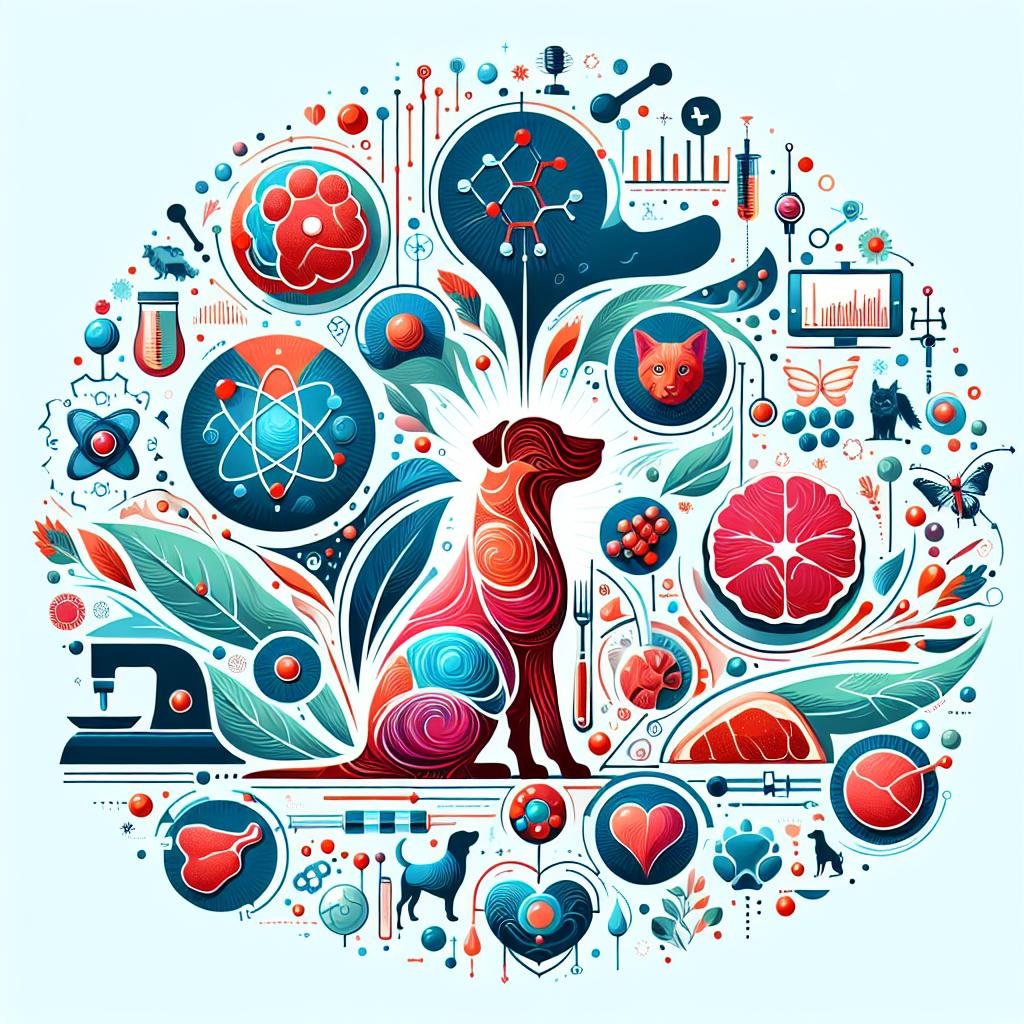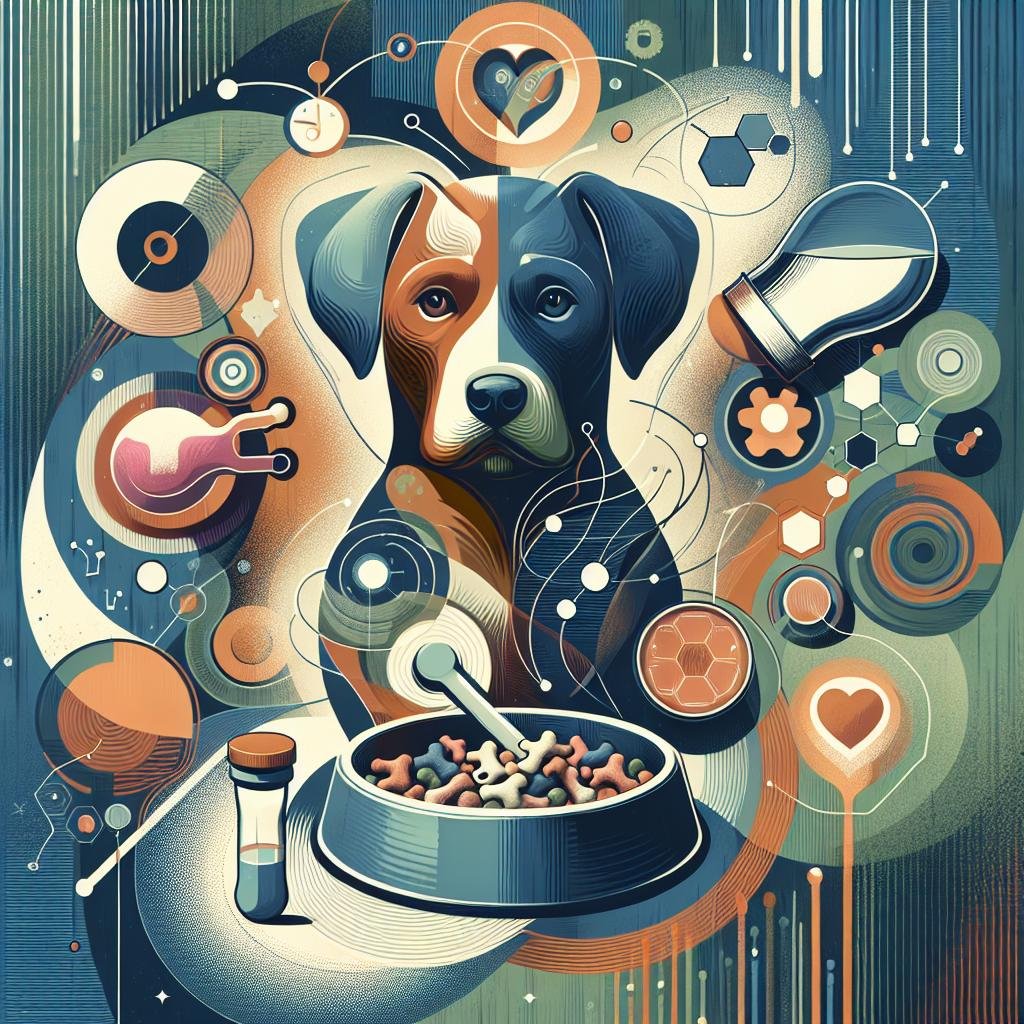The Role of Protein in Your Dog’s Diet
As pet owners, we often find ourselves pondering the best ways to nourish our furry companions. From choosing the right kibble to exploring homemade meal options, the quest for optimal canine nutrition can sometimes feel overwhelming. Among the myriad of nutrients essential for a dog’s health, protein stands out as a cornerstone. This vital macronutrient not only fuels your dog’s daily activities but also plays a crucial role in their growth, maintenance, and overall well-being. In this article, we’ll delve into the significance of protein in your dog’s diet, uncovering how it supports their body and why finding the right sources is fundamental to keeping your pet vibrant and thriving. Join us on this exploration into the world of canine nutrition, where we’ll break down the importance of protein and help you make informed choices for your beloved companion.
Understanding the Building Blocks of Your Dogs Health
Protein serves as a fundamental building block of your dog’s health, playing a crucial role in growth, maintenance, and overall well-being. It’s the primary component of the body’s structure, responsible for forming muscles, skin, and even the immune system. To maximize these health benefits, incorporating high-quality protein sources into your dog’s diet is essential. Consider the following sources:
- Animal Proteins: Examples include chicken, beef, lamb, and fish. These meats provide essential amino acids that your dog cannot synthesize on its own.
- Plant Proteins: Lentils, peas, and quinoa can be beneficial, especially for dogs with certain dietary restrictions.
- Protein Supplements: Products like egg protein or specialized dog food designed for particular health needs.
When evaluating your dog’s protein intake, it’s important to consider their age, size, and activity level. Puppies generally require more protein for growth, while older dogs may need less to avoid unnecessary weight gain. A balanced diet should also factor in not just the quantity of protein but its quality. A reliable guideline is to ensure that the protein source listed as the first ingredient in their food is a recognized animal protein. Below is a simple reference table to help you determine the approximate protein needs based on your dog’s weight:
| Dog Weight (lbs) | Daily Protein Requirement (grams) |
|---|---|
| 10 | 15-20 |
| 30 | 30-40 |
| 50 | 50-75 |
| 70 | 60-90 |
Choosing the Right Sources of Protein for Optimal Nutrition
When selecting protein sources for your dog, it’s essential to consider not just the quantity of protein but also its quality. High-quality protein is rich in essential amino acids that contribute to muscle maintenance, immune function, and overall health. Opt for animal-based proteins like chicken, beef, and fish, which are more digestible and provide a complete amino acid profile. Additionally, alternatives such as eggs and dairy products can be excellent supplementary sources, offering plenty of nutrients as well.
Plant-based proteins, while beneficial, often lack some essential amino acids and may require careful balancing in your dog’s diet. Consider incorporating whole grains like quinoa and legumes such as lentils for added fiber and nutrients. It’s also vital to check for any allergies your dog might have, as some may react poorly to certain proteins. A well-rounded approach, including both animal and plant sources, can help ensure your furry companion thrives. Below is a simple comparison of protein sources:
| Protein Source | Benefits |
|---|---|
| Chicken | Easy to digest, rich in essential amino acids |
| Fish | High in Omega-3 fatty acids, promotes healthy skin and coat |
| Beef | Rich in nutrients, supports muscle development |
| Lentils | High in fiber, beneficial for digestion |
| Quinoa | Complete protein, contains essential amino acids |

Balancing Protein in Your Dogs Diet for Energy and Wellness
Protein serves as one of the fundamental building blocks in your dog’s diet, providing the necessary amino acids that support their overall health and vitality. A well-balanced protein intake can enhance energy levels, muscle maintenance, and immune function. When considering the right amount of protein, it’s essential to factor in your dog’s size, age, activity level, and breed. Adult dogs generally need about 18-25% protein in their diet, while puppies and pregnant or nursing females may require more, often 22-32%, to support their rapid growth and reproductive health.
Choosing high-quality sources of protein is equally significant. Look for foods that include real meat, fish, or eggs as the primary ingredients. Additionally, incorporating plant proteins like peas and lentils can provide a nutritional boost. Here are some key considerations for balancing protein in your dog’s diet:
- Quality over Quantity: Opt for premium dog foods rich in animal proteins rather than fillers.
- Variety is Key: Incorporate different protein sources to cover a range of amino acids.
- Watch for Allergies: Monitor your dog for any signs of food intolerance when introducing new proteins.
| Protein Source | Amino Acids | Benefits |
|---|---|---|
| Chicken | High in essential amino acids | Promotes muscle growth |
| Fish | Omega-3 fatty acids | Supports skin and coat health |
| Lentils | Rich in fiber and protein | Aids digestion |

Signs of Protein Deficiency and How to Address Them
Recognizing the signs of protein deficiency in your dog is crucial for their overall health and well-being. Common symptoms include:
- Decreased energy levels: A lack of protein can lead to fatigue and lethargy.
- Weakness in muscles: Dogs may exhibit diminished muscle mass and strength.
- Skin issues: Flaky skin or excessive shedding can be indicative of insufficient protein.
- Delayed recovery: An extended healing time from injuries suggests a compromised immune system.
To address these protein deficiency signs, consider the following steps to enhance your dog’s diet:
- Incorporate high-quality protein sources: Look for dog food that lists meat, fish, or eggs as primary ingredients.
- Consult with a veterinarian: A professional can help customize your dog’s diet based on their specific needs.
- Monitor feeding amounts: Ensure your dog receives adequate portions based on their size and activity level.
- Consider supplements: Protein powders or treats can enhance your dog’s intake.
Q&A
Q&A: The Role of Protein in Your Dog’s Diet
Q: Why is protein essential for dogs?
A: Protein plays a crucial role in a dog’s overall health as it provides the building blocks for cells and tissues. As a macronutrient, it is vital for growth, maintenance, and repair of muscles and organs. Additionally, protein contributes to a healthy coat, skin, and even the production of enzymes and hormones that help regulate various bodily functions.
Q: How much protein does a dog need?
A: The protein requirement can vary depending on several factors including your dog’s age, weight, activity level, and overall health. Generally, adult dogs require about 18-25% of their daily calories from protein, while puppies and active breeds may need up to 30% or more. It’s essential to consult your veterinarian to determine the ideal protein intake for your furry friend.
Q: What are some high-quality sources of protein for dogs?
A: Quality protein sources for dogs include meat (like chicken, beef, and fish), eggs, and dairy products. Additionally, some plant-based options such as legumes and quinoa can provide protein, although they should typically complement animal proteins to ensure a balanced amino acid profile.
Q: Can dogs get enough protein from a vegetarian or vegan diet?
A: While it’s possible for dogs to thrive on a vegetarian or vegan diet, it requires careful planning to ensure they receive all essential amino acids. Many plant proteins lack one or more of these essential amino acids, so it’s important to combine different sources and consider supplements if needed. Consulting with a veterinarian or a pet nutritionist is recommended to create a balanced diet that meets your dog’s needs.
Q: Are there risks associated with feeding dogs too much protein?
A: Yes, excessive protein intake can lead to health issues, particularly in dogs with pre-existing kidney problems, as their kidneys may struggle to process the increased waste products from protein metabolism. Additionally, an unbalanced diet skewed heavily towards protein can lead to deficiencies in other essential nutrients. Moderation and balance are key.
Q: How can I tell if my dog is getting enough protein?
A: Observing your dog’s overall health can provide helpful insights. Signs that your dog might be getting adequate protein include a shiny coat, healthy skin, good muscle tone, and normal energy levels. Alternatively, if you notice weight loss, a dull coat, lethargy, or poor muscle development, it may indicate a dietary imbalance that could include insufficient protein.
Q: What should I look for on dog food labels regarding protein?
A: When examining dog food labels, look for specific sources of protein rather than vague terms like “meat byproducts.” Ideally, the first ingredient should be a named protein source (e.g., chicken, lamb, salmon). Also, check the guaranteed analysis for protein content to ensure it meets your dog’s dietary needs.
Q: Can protein supplements benefit my dog?
A: Protein supplements can be beneficial for dogs with higher protein needs, such as specific working breeds or those recovering from illness or injury. However, it’s essential to use supplements judiciously and under the guidance of a veterinarian to avoid over-supplementation and an imbalanced diet.
Q: How can I incorporate more protein into my dog’s diet?
A: To boost protein intake, consider adding cooked meats or eggs to your dog’s regular meals. You can also explore high-protein commercial dog foods or treats. Just be sure to adjust portions as necessary to maintain a balanced diet and avoid overfeeding.
Q: Are there any specific signs of protein deficiency in dogs?
A: Yes! Signs of protein deficiency can include poor growth in puppies, muscle wasting in adults, a dull and brittle coat, skin issues, and lethargy. If you observe these symptoms, it’s best to consult with a veterinarian to address your dog’s dietary needs.
This Q&A serves as a foundational understanding of the pivotal role protein plays in your dog’s diet, ensuring they thrive and stay healthy for years to come!
Wrapping Up
understanding the vital role that protein plays in your dog’s diet is essential for promoting optimal health and longevity. Just as we carefully consider what fuels our bodies, your furry friend deserves the same attention. By choosing high-quality protein sources and balancing their nutritional needs, you can help ensure that your dog leads a vibrant, energetic life. So the next time you fill their bowl, remember that each bite is not just a meal—it’s a step toward a happier, healthier companion. Embrace the power of protein, and give your dog the best chance to thrive. After all, they’re not just pets; they’re cherished members of our families.

